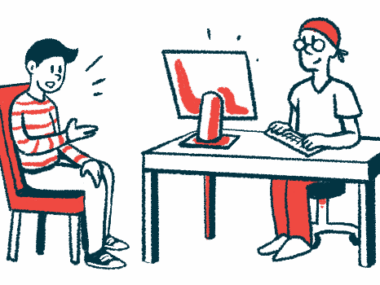Different types of motor disorders often co-occur in Rett syndrome
Researchers studied movement impairments in 20 females with disease
Written by |

Many types of movement disorders such as uncontrolled muscle contractions and Parkinson’s-like motor changes often co-occur with Rett syndrome, a study shows.
The severity of movement disorders is associated with Rett’s overall severity, with uncontrolled muscle contractions particularly linked with breathing trouble and digestive problems, data indicate. The findings show the importance of systematically evaluating movement disorders in Rett patients to guide personalized care, the researchers said.
The study, “Parkinsonism and Dystonia Are Prevalent and Concomitant Movement Disorders in a Cohort of Patients with Rett Syndrome,” was published in Movement Disorders.
Rett syndrome is a genetic condition that can cause a wide range of abnormalities, including cognitive, emotional, sensory, heart, and breathing issues. Movement disorders are also known to happen with Rett syndrome, though data with respect to how these problems tend to show or associate with other disease manifestations are lacking.
“Understanding the characteristics of [movement disorders] in [Rett syndrome] and their correlation with other aspects of the disease is of clinical relevance, potentially improving patient quality of life through targeted interventions and therapies,” wrote the researchers, who said their study sought “analyze the frequency and types of [movement disorders] in [Rett] with MECP2 variants and evaluate their associations with disease severity and other symptoms of [Rett].” Mutations in the MECP2 gene are the chief cause of Rett syndrome.
Movement disorders in Rett syndrome
As part of their study, the researchers evaluated movement disorders in 20 females with Rett, ages 3 through 40. Most had a history of seizures, but other symptoms like digestive issues, trouble breathing, and difficulty sleeping were also common.
The most common motor disorder, affecting all but one participant, was dystonia, which is uncontrolled muscle contractions that result in twisting, repetitive movements, or fixed postures. Also, more than half the patients showed signs of parkinsonism, which refers to motor changes like slowed movement, tremor, or stiffness that are commonly seen in Parkinson’s disease. Three-quarters of the patients showed signs of both parkinsonism and dystonia concurrently.
“Parkinsonism and dystonia coexisted … in 75% of cases in our sample, highlighting their strong interrelationship,” wrote the researchers, who also noted that 75% of the patients had reduced hand function, with nearly all of them displaying hand stereotypies, that is, atypical repetitive movements, such as rubbing their hands together or bringing them to their mouth.
Statistical tests showed that scores on the Movement Disorders-Childhood Rating Scale (MD-CRS) were significantly correlated with scores on the Rett Assessment Rating Scale (RARS). In other words, the presence and severity of motor symptoms in Rett syndrome are closely associated with the disease’s overall severity. More granular analyses indicated that patients with dystonia were more likely to have issues breathing and digestive problems. Statistically meaningful associations between motor disorders and epilepsy weren’t seen, however.
The data show the importance of evaluating each patient’s motor problems in detail to help guide personalized care, the researchers said. “[Motor disorders] should be systematically evaluated (with standardized tests and video-recording of the neurological examination) in [Rett] patients, potentially influencing clinical guidelines and personalized treatment strategies,” they wrote.






